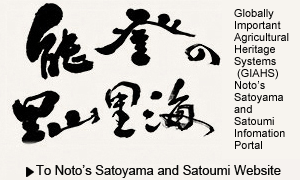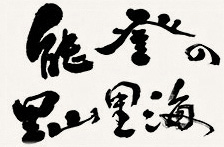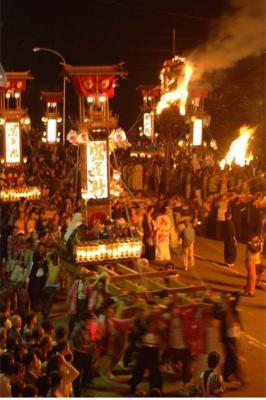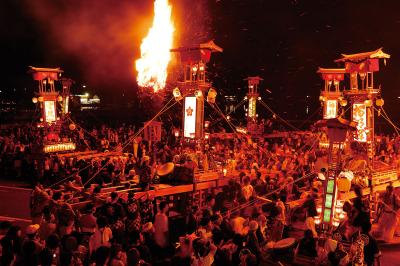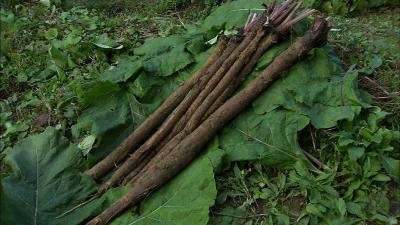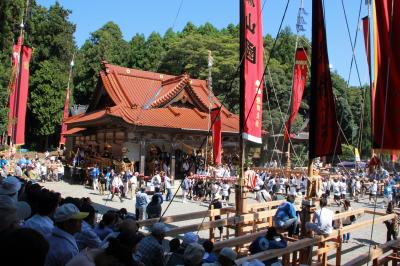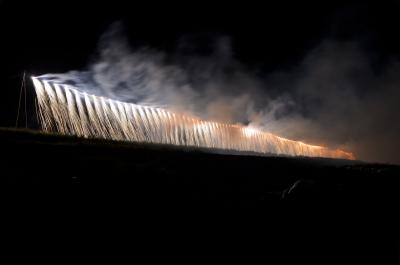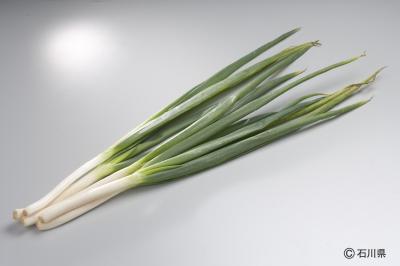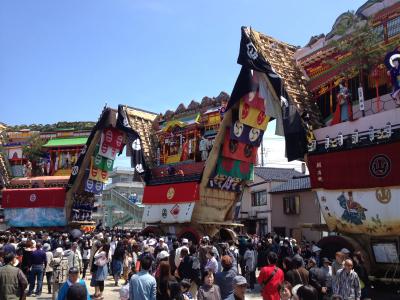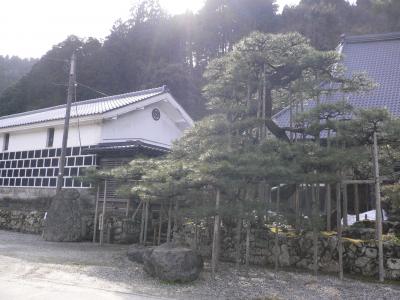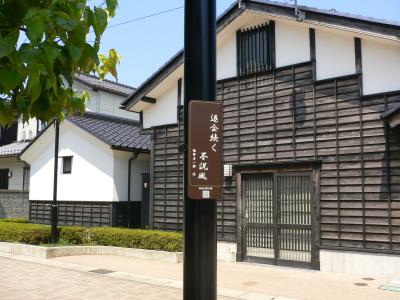
Name
Abare Festival
Address
Ushitsu, Noto Town
Category
Festival
Class
Custom
Age
17th century~19th century
Designation
Ushitsu Kiriko Festival: Ishikawa Prefecture Intangible Folk Cultural Asset (October 1989)
Comment
This summer festival of Yasaka Shrine has been held on the first Friday and Saturday of July since the early feudal period. As indicated by the name Abare, or rampage, it features wild dancing. According to legend, a contagious disease spread in this area in the Kanbun period (1661~1673), and the deity Gozu Tenno was invited from Kyoto’s Gion Shine and enshrined here. Then, the spread of disease stopped. The deity was fond of boisterous activity, and he was pleased when people went on the rampage. This is said to be the origin of the festival. On the first evening of the festival, each 6.5m-high kiriko is carried by around 50 people, who march with it around the town. After that, 50 kiriko lanterns are assembled in the square on the coast in front of the town hall. The carriers dance to the sound of flutes, drums, and gongs in the sparks of an 8m-high torch. On the second evening, the carriers march to Yasaka Shrine, throwing two portable shrines onto roads, and into rivers and bonfires. Kiriko lanterns are carried at the front and back of the portable shrines. When they arrive at the square in front of the shrine, the carriers keep beating the portable shrines against the ground for more than three hours, and then enshrine them. The guardian shrines of the people of Ushitsu are Hakusan Shrine and Sakataru Shrine, and there are no parishioners for Yasaka Shrine. However, Yasaka Shrine has been worshipped as the deity that stopped the disease, and the parishioners of Hakusan Shrine and Sakataru Shrine have held the festival jointly.
Material Link
Views
Access number:18043

